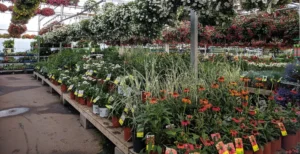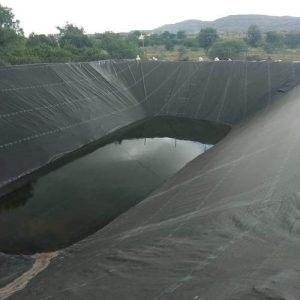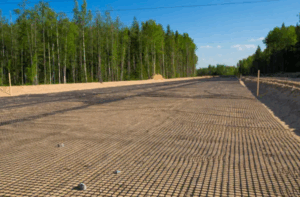Uses of Geotextile bags
Geotextile bags are made of woven polyethylene material. They feature a highpermeability rating and show good resistance to erosion and weathering of the surrounding area. They are specifically designed for storing and transporting rocks,soils, sediments, fertilizer, and other solid or grain-like materials. Theirpermeability and resistance to UV rays, puncture, and abrasion, making them anideal tool for separating water and solid material in any given area of constructionor where protection from the liquid is a necessity.
Geotextile bags can be used during construction of breakwaters, for the basalprotection of marine life and structures, to add strength to a coastline, help preventerosion and act as naturally formed dunes would. Constructed of eco-friendlymaterials, geotextile bags are known as “soft structures” that will not affect themarine habitat upon implementation. These bags are also more cost-effective inareas where large rocks or boulders are not readily available. A surprising marineuse for geotextile bags is land reclamation and marsh creations. When bags arefilled with soils and formed into a circle, the inner circle may then be filled withsoil or land material that can extend a land surface offshore creating more surfacearea.
When used for erosion control, geotextile bags may be placed along shorelines inangled stacks to absorb the tide and release it back to its origin, protecting the sandor soil behind it. This practice can be used for Island preservation, beachpreservation, river embankment protection, or independently to protect waterfrontproperties. Geotextile bags may be constructed in sand-like colors to be moreaesthetically pleasing upon completion or surrounded and covered by large rocknative to the area. Surrounding geotextile bags in rock formations will not hinderits productivity and can make construction less of an eyesore. For river banks,geotextile bags are often stacked in a stair-like structure and lined with garneting.
This method allows for soil stabilization through the use of the geotextile bags, butalso the new growth of plants and vegetation. Once the new structure is securedand left undisturbed, nature will then use the structure as a foundation for new growth. Hydro seeding is also common to aid in plant growth during this time.
Plant roots will take hold of the structure and in turn the soil beneath, creating an even tighter barrier against erosion. This method is primarily used on river embankments.
Geotextile bags may also be paired with gabion structures, enabling them to betterwithstand predicted pressures to a completed structure. This method may be usedwhen cobblestone or gravel is sparse, and an environmentally safe structure isneeded. Often this technique may be implemented for the remediation of wildcreek revetment as well as slope stability.
Wastewater treatments also employ the use of geotextile bags to aid in thedewatering of sludge material. The goal for all wastewater plants is to convertunusable liquids and their contaminants into a form that is now safe to return to the Environment. This has been made possible for underdeveloped nations through theuse of cheaper, more cost-effective geotextile bags. These bags will be filled with Wastewater sludge material and then allow any water or liquids to safely drain outwhile containing the solid materials in the bag. This is done solely through theeffects of gravity and requires no other machinery or cost to complete. Once filledto maximum capacity, the geotextile bag may then be carried off-site and disposedof in other matters. Sometimes the solid rock materials inside the bags may bereused for other tasks.
Another common use of geotextile bags has been for retention walls. The goal of aretention wall is to combat the lateral pressure of soil during construction or forconstruction purposes. One of the first uses for geotextile bags in this way wasduring the war to construct in-ground walls and trenches for hideouts andprotection. Now, geotextile bags are used in the same manner for other tasks likeroadside soil retention or structure stability on sloped surfaces. As previouslymentioned, retention walls are often hydro seeded upon completion to aid in soilstability once new growth has formed.



